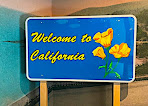The Oakland Museum was created by amalgamating three separate museums, the Oakland Public Museum, the Oakland Art Gallery, and the Snow Museum of Natural History. Each of these museums had a focus upon one of three areas, California History, California Art, and California’s Natural History so it seemed natural to combine the three museums into one. The eventual merger of the three museums began in 1954 when the boards of the three organizations formed a non-profit to merge the institutions into one. In 1961, the voters authorized a bond issue to build a new home for the combined museum and, in 1969, the museum opened its doors. Created during the Civil Rights Movement, the Black Power Movement, and the anti-Viet Nam War protests, the new museum’s goal was to be more inclusive, more “a people’s museum”, more interactive, and more “open”. This approach was not without controversy and still guides the museum’s overall mission to this day.
After you enter the museum, I suggest that you go to the California History Gallery first. There you will find a number of displays telling the story of our state from the indigenous people, to first contact, to the Spanish Era, the Mexican Era, the Gold Rush, the coming of the railroads, the growth of the movie industry, petroleum, and agriculture, to the growth of the electronics and technology industry and beyond. Of special interest are the exhibits on the contact between the indigenous peoples and the early Spanish, the Gold Rush and the effects of the railroads. In each of these exhibits, the curators do an excellent job of not only presenting the history but of telling of the interaction between groups and cultures, and how that created the society in which we live. Next is the Natural History Gallery. Here the curator has decided
to begin with the physical geography of California and then the rest
of the collection is divided by geographic area. There are exhibits
on coastal regions, the Sierra Nevada, the Central Valley, the
deserts, the Bay Area and even the Sierra Buttes. One of the
highlights, for me at least, was an exhibit on what happened to the
oaks which gave Oakland its name and how their fate was unplanned,
unforeseen, and serves as a cautionary tale for environmental
preservation.
Next is the Natural History Gallery. Here the curator has decided
to begin with the physical geography of California and then the rest
of the collection is divided by geographic area. There are exhibits
on coastal regions, the Sierra Nevada, the Central Valley, the
deserts, the Bay Area and even the Sierra Buttes. One of the
highlights, for me at least, was an exhibit on what happened to the
oaks which gave Oakland its name and how their fate was unplanned,
unforeseen, and serves as a cautionary tale for environmental
preservation.
So, now for the important items. The cost to enter the museum is $16.00 per adult 18 years of age or older. For Seniors, 65 and older the cost is $11.00. Youths between the ages of 13-17 pay just $7.00 and Children 12 years of age and younger are free. There is an additional $5.00 charge for any “special exhibitions”. The Museum is currently open Wednesdays through Sundays 11:00-5:00 with extended hours on Fridays until 9:00 pm. It is closed on various holidays and public observances. Please check the museum’s website at: https://museumca.org/ for further information and to purchase tickets. Be advised that the museum still requires masks, proof of vaccination, and social distancing at this time.
Getting There: The Oakland Museum of California is easily reached by BART. The station nearest the museum is Lake Merritt which is on the Orange Line. If you take BART. You exit the station and walk one block east on Oak Street from 9th to 10th Street. The Museum’s address is 1000 Oak Street.
If you are driving from 414 Mason Street: Cross the Bay Bridge and take 580 East to 980 West/Downtown Oakland. Take the Jackson Street exit; you will be on 5th Street. Continue straight on 5th Street to the third stoplight (Oak Street). Turn left and continue on Oak to 10th Street.
The OMCA garage is located at 1000 Oak St. with entrances on Oak and 12th Streets. Parking fees are $5 per hour with an early-bird discounted flat rate of $20 (in before 10 am, out before 5 pm). Those parking before 8 am and leaving before 10 am will pay the regular incremental rate.
The Museum has a café and a gift shop.


